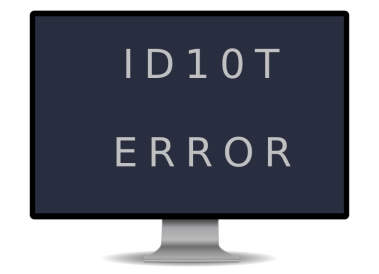"1D10T" and "PEBKAC" are both humorous acronyms commonly used in the field of information technology to describe user errors or problems. They are often used by IT professionals or tech-savvy individuals to express frustration or amusement at the mistakes made by non-technical users.
1D10T: Pronounced as "one dee ten tee," this acronym is derived from the word "idiot." It is a play on the concept of "leet speak," which is a form of internet slang that replaces letters with numbers or symbols. In this case, the number 1 replaces the letter "I," and the number 0 replaces the letter "O." So, "1D10T" essentially means "idiot" or someone who has made a foolish mistake or error.
PEBKAC: Pronounced as "peab-kak," this acronym stands for "Problem Exists Between Keyboard And Chair." It humorously suggests that the source of the problem lies with the user themselves, rather than with the technology or software. In other words, it implies that the user is making a mistake or not using the technology correctly, leading to the issue they are experiencing.
Both terms are often used in a light-hearted manner within the tech community to describe common user errors, reminding everyone that mistakes happen and it's important to approach them with patience and understanding.
While these terms may be used in a joking manner among tech professionals, it's important to note that using them directly with users can be perceived as condescending and unprofessional. Effective communication in technical support involves patience, understanding, and a willingness to assist users in resolving their issues without belittling them. Tech support personnel are often encouraged to use more neutral and respectful language when interacting with users to maintain a positive and helpful relationship.
Source: Some or all of the content was generated using an AI language model


No comments:
Post a Comment